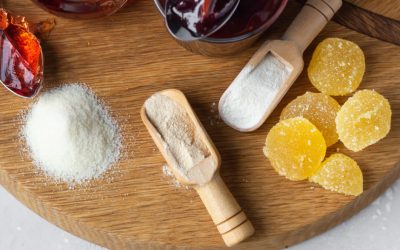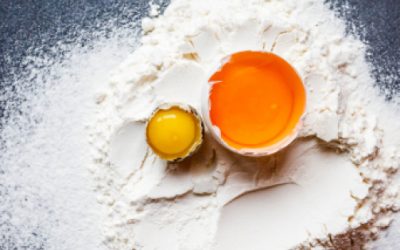Knowledge Base
Xanthan Gum
Xanthan Gum was discovered and developed by Allena Rosalind Jeanes, a researcher in the U.S Department of Agriculture. Xanthan gum has been commercially used since the 70s.
How is Xanthan Gum Made?
Xanthan gum is produced by natural fermentation of the bacterium Xanthomonas campestris.The fermentation process occurs with cabbage, corn, wheat, or soy. In simple terms, the bacterium digests these vegetables and produces a complex sugar polymer as a result.
Next, alcohol is added to the element to make it drop out of solution. The final product that you see in the form of a powder is achieved after the separated gum is dried and ground so it can be used in food and other products.
Xanthan Gum and Cooking
One of the things that have made Xanthan gum such a success in the culinary world is its ability to thicken foods without adding its own flavour. Because it is flavourless, chefs don’t have to worry about altering the essential taste of their dish.
Other than thickening, xanthan gum also helps in keeping solid particles in suspension. It provides an even texture and improves its uniformity and mouth feel. While this product is widely used commercially, home cooks can also use the specialist ingredient in their cooking to stabilise and thicken soy milk and rice milk-based soups, sauces, and nondairy ice-creams.
Another reason why xanthan gum is favoured over gelatine and other products is that it is vegan and gluten-free so can be used in baking as a replacement in vegetarian, vegan and gluten free products.
Using Xanthan Gum
Another special feature of xanthan gum is that it doesn’t need to be heated or cooled to form a gel. Instead, simply add the recommended amount of xanthan gum to your liquid, (depending on the thickness of the liquid) and it will form into a gel once it is mixed. The product is also not affected by heat or acid and so can be added to a variety of juices or sauces.
To use xanthan gum, add it to your liquid and use a blender to combine. Remember to use a blender because if it is not constantly in motion while mixing, it will form clumps.
Learn more with our extensive knowledge base
Brush up your knowledge on allergens, kosher food and even UK food Laws with our knowledge base
Gelatine Knowledge
Dairy Knowledge
Knowledge – Eggs
KNOWLEDGE - EggsEggs are laid by female animals of many different species. Bird and reptile eggs consist of an eggshell, (egg white), (egg yolk), contained within various membranes. Chickens and other egg-laying creatures are kept widely throughout the world and mass...



